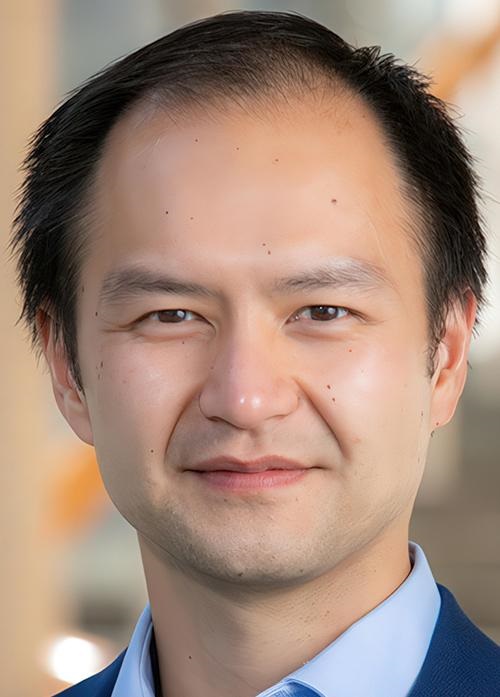Use of artificial intelligence in clinical laboratory testing could improve the diagnosis of cancer worldwide
In a proof of concept study, scientists at Shanghai Jiao Tong University in China have developed a clinical laboratory test that utilizes artificial intelligence (AI) to diagnose three types of cancer from a single drop of dried blood. The paper-based test was able to identify patients with colorectal, gastric, and pancreatic cancers and distinguish between patients with and without cancer.
The team’s goal was to develop a way to diagnose cancer while the disease is still in the earlier stages, especially in rural areas.
“Over a billion people across the world experience a high rate of missed disease diagnosis, an issue that highlights the need for diagnostic tools showing increased accuracy and affordability. In addition, such tools could be used in ecologically fragile and energy-limited regions, pointing to the need for developing solutions that can maximize health gains under limited resources for enhanced sustainability,” the researchers wrote in an article published in the journal Nature Sustainability titled, “A Sustainable Approach to Universal Metabolic Cancer Diagnosis.”
The researchers determined that by using less than 0.05 millimeters of dried blood, their test could accurately and quickly identify if a patient had cancer between 82% to 100% of the time.

According to Chaoyuan Kuang, MD, PhD (above), an oncologist at Montefiore Health System and assistant professor at the Albert Einstein College of Medicine, unlike liquid blood, dried serum can be “collected, stored, and transported at much lower cost and with much simpler equipment,” Live Science reported. “This could help democratize the availability of cancer early detection testing across the world,” he added. A paper-based clinical laboratory test that can detect and distinguish one cancer type from another would be a boon to cancer diagnosis worldwide. (Photo copyright: Albert Einstein College of Medicine.)
Improving Cancer Screening in Rural Areas
An earlier study conducted in China in 2022 examined results from 1,570 cancer survivors from both urban and rural areas of China. That study showed that 84.1% of the patients were diagnosed with cancer only after developing symptoms and that urban patients were more likely to be diagnosed in the early stages of cancer. In addition, rural patients also had less screening and treatment options available to them.
The researchers in this latest Chinese study tested their AI model on blood donors with and without cancer and compared the results to traditional liquid-blood biopsy tests.
“Based on modeling they performed, they reported the new tool could reduce the estimated proportion of undiagnosed cases of pancreatic, gastric, and colorectal cancers by about 20% to 50% if it was used for population-level cancer screening in rural China,” Live Science reported.
The scientists used dried serum spots (DSS) and machine learning to perform the research. According to their Nature Sustainability paper, DSS can be challenging in cancer research because sensitive biomarkers in the samples are often degraded or have inadequate amount of blood for proper analysis. To circumvent these issues, the researchers used nanoparticle-enhanced laser desorption/ionization mass spectrometry (NPELDI MS) to increase reliability and sensitivity. Inorganic nanoparticles were applied to the samples to strengthen selectivity and refine metabolic compounds from the samples.
However, the study authors noted that “the adaptation of NPELDI MS to dried spot analysis has not been validated,” Interesting Engineering reported.
A ‘Great Start’
The machine learning algorithm the Chinese scientists created demonstrates that DSS samples can be used to preserve important biological markers and could be beneficial in the diagnosis of cancer.
Their research indicated an overall reduction rate of undiagnosed cancers in the range of 20.35% to 55.10%. The researchers estimated the implementation of their AI tool could reduce the proportion of specific undiagnosed cancer cases in rural China by:
- 84.30% to 29.20% for colorectal cancer,
- 77.57% to 57.22% for gastric cancer, and
- 34.56% to 9.30% for pancreatic cancer.
It’s a “great start,” Chaoyuan Kuang, MD, PhD, an oncologist at Montefiore Health System and assistant professor at the Albert Einstein College of Medicine told Live Science. “This cancer test won’t enter use for a long time,” he said. Nevertheless, the potential of the tool is “immense,” he added, but that “we are still years away from being able to offer this test to patients.
“With further development, it could theoretically be used for the early detection of other types of cancer or for other diseases, or to monitor the progression of disease in patients who have already been diagnosed,” he noted.
Further research and clinical trials are needed before this AI tool can be used in a clinical diagnostic setting. This study is another example of researchers looking for cancer biomarkers in specimen types that are not tissue and further supports the hope that machine learning may one day detect cancer in earlier stages, increase survival rates, and save healthcare costs.
One factor motivating this type of research in China is the fact that the nation has more than 36,000 hospitals and approximately 20,000 anatomic pathologists. Of this total, only a minority of these pathologists have been trained to the standards of North America and Northern Europe.
Like other nations, China’s demand for subspecialist pathology services outstrips its supply of such pathologists. This is the reason why researchers in that country want to develop diagnostic assays for cancer and other diseases that are faster, cheaper, and comparable to a human pathologist in accuracy.
—JP Schlingman
Related Information:
Detecting Cancer in Minutes Possible with Just a Drop of Dried Blood and New Test, Study Hints
AI-powered Tool Detects Cancer in Minutes with One Drop of Blood
A Sustainable Approach to Universal Metabolic Cancer Diagnosis
UK’s National Health Service Tests AI Tool That Can Spot Cancer in Mammograms Missed by Doctors


